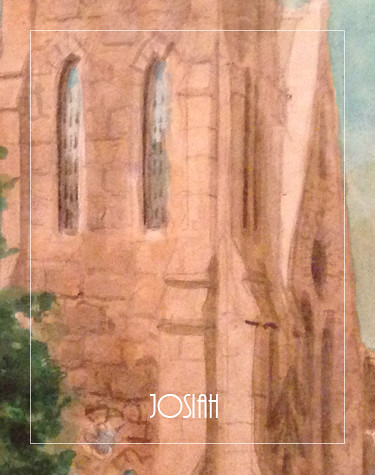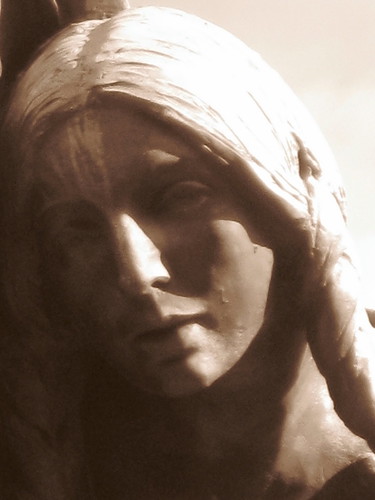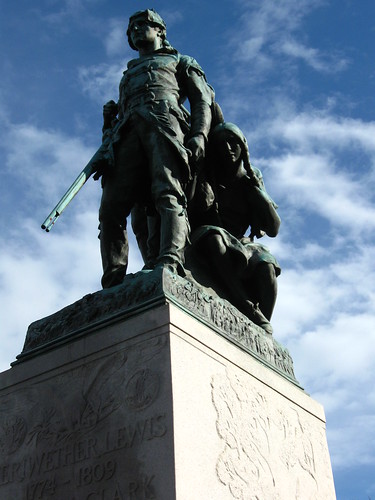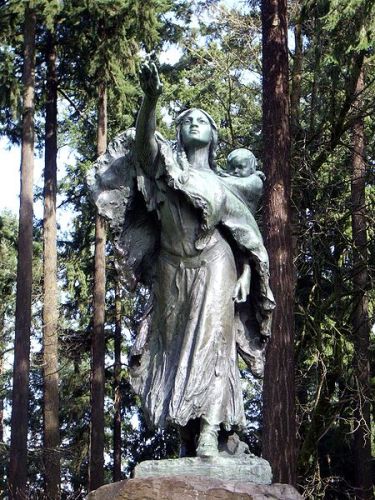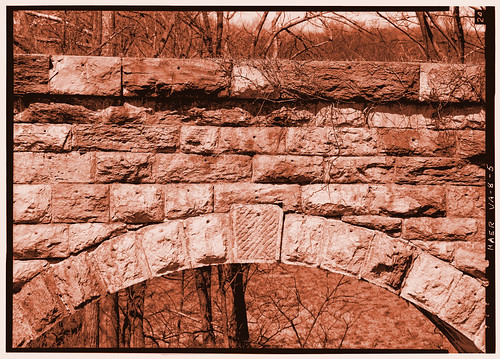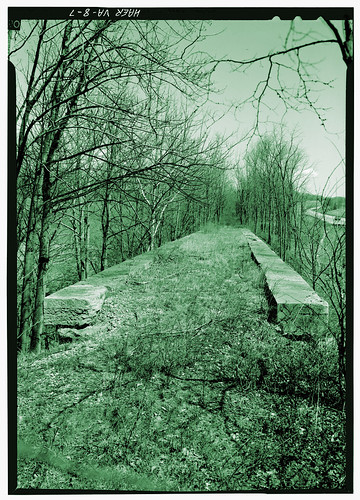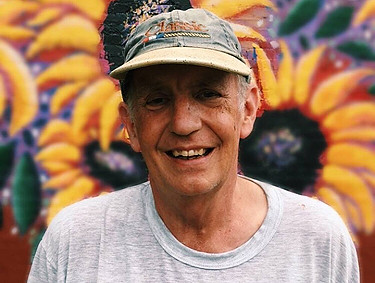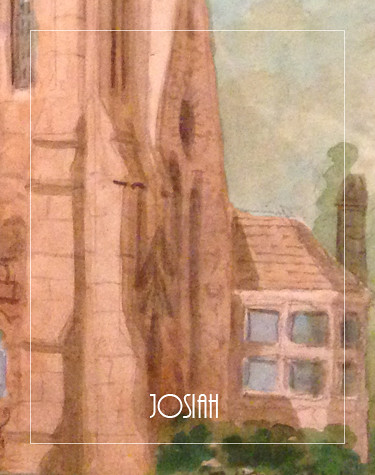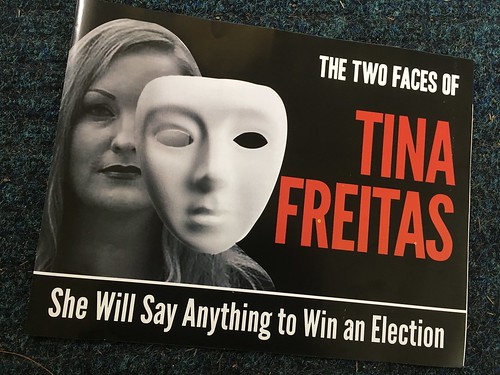
Volume XVI, Issue XXV
Josiah
By Bob Kirchman
Copyright © 2019, The Kirchman Studio, all rights reserved
Chapter 12: Build a Bridge!
Hannah brought out the coffee for the young man who had just arrived at the Zimmerman Organization Headquarters in Wales. In true form to the local traditions, Josiah poured her a cup, then one for himself. It honored Zimmerman’s Mother who was an engineer in that formerly male dominated profession decades ago. Rupert Zimmerman had insisted the practice continue as a memorial to her. In fact, the culture of the bridge now contained many such nods to those who had paved the way. Josiah had laughed at them in his youth, but now he had come to learn that they were rooted most of all in a sense of reverence for the Divine, who made families and gave wisdom to be passed from generation to generation.
Soon they were joined by Alan West, Flight Director for Cape Lisbon, Rupert’s Granddaughter, Chief Engineer of the Zimmerman Organization, Elizabeth Zimmerman O’Malley, CEO, Abiyah Ben-Gurion and Jon Greene, Professors of the College on Big Diomede.
Mrs. O’Malley began, “My Father devoted his life to making a way for mankind to go where we’d never been before. He considered himself most blessed that he lived to see the things he did. But he always felt a responsibility to those he felt he’d recklessly lead there. It is in that spirit that I have called us together. That drive led us to go to another world and now there are people living there in some confusion. We do not want to send ‘Great Northern’ back there – we don’t even think it is wise, but we’d like to reach out to the colonists and try to help them.”
West offered, “We could continue to supply them remotely with unmanned landers. Eventually they’d have enough landers that some of them could return to Earth, if they so desired. But it is painfully obvious that they feel alienated from us – and our traditions. We feel a human touch would do much to ‘build a bridge,’ if you get my drift.”
Greene observed, “Ray Bradbury once wrote about a similar scenario. Earth is destroyed in a nuclear war but a family takes a rocket on a "fishing trip" to Mars and they escape destruction. They destroy all artifacts of their old ‘misguided’ life. Later, the father offers his sons a gift in the form of their new world. He introduces them to Martians—their own reflections in a canal. That is what we have here. You once said you wished for an unreached world to reach. May I introduce to you the Martians?”
West interjected “It would mean nine months in a fairly cramped environment. There is some risk in any spaceflight and we plan to send a crew of three. There would be no guarantee as to how the colonists would respond when you landed. It seems there are several factions and they disagree on things sharply.”
Josiah’s mind wandered to the story of Nathanael "Nate" Saint, who along with four other men, Jim Elliot, Ed McCully, Pete Fleming, and Roger Youderian, sought to establish communication with the warlike Huaorani of Ecuador. They set out in a little yellow Piper PA-14 and landed on a beach of the Curaray River. Though the Huaorani had enthusiastically received gifts lowered in a bucket from the plane earlier, they murdered the five men with spears on January 8, 1958.
Though the men were armed, they did not want to kill any Huaorani and they did not use their weapons. West said “I think it prudent to give you some means of protecting yourselves, but I cannot guarantee anyone’s safety at this point. We could continue to send supplies by unmanned craft, but I think they need to see us as more than that, if you know what I mean.”
(to be continued)
George Westinghouse
American Innovator
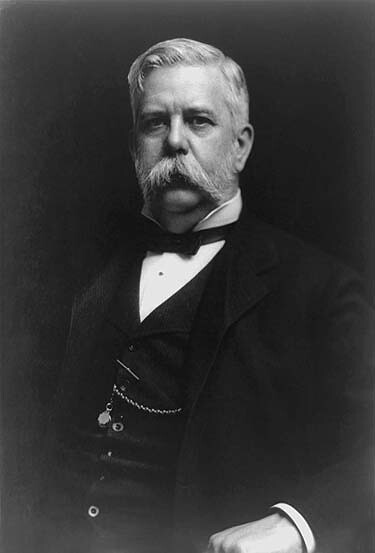
George Westinghouse, American Innovator.
The qualities of George Westinghouse which, it seems to me, gave him the supreme quality of genius, were the qualities of imagination, faith, and courage. We know many men of great mental vigor; we know many men of strong character. Those qualities are, of course, the background of any successful career, but I am sure none of us has ever known a man who combined the qualities of faith, imagination, and courage as they were combined in George Westinghouse.” – Paul D. Cravath
We need more heroes like George Westinghouse. In our day the development of great works and human decency are often (mistakenly) considered mutually exclusive. Westinghouse was a brilliant man, an innovator, and a captain of industry. He was worth millions of dollars but never forgot his humble beginnings. Westinghouse as a youth was one you would have not thought likely to succeed. School bored him and he preferred working in his father’s shops where he eventually found himself working at a very young age. Most of us remember that he invented air brakes for trains, but few remember that when he built his great air brake factory outside of Pittsburgh, he built beautiful houses for his workers and set up a monthly payment plan so that they could buy them. He even insured the houses so that if a family were to lose their breadwinner, they would not lose their home.
While other inventors like Thomas Edison accumulated many patents based on the work of their employees, Westinghouse assembled around him the best and brightest he could find and insisted that they receive attribution for their own patents. It is said that he would have well over a thousand patents had he registered them in his own name. His brilliant engineers were not all men either. Because of his generous attribution policy we know that he had in his employ one Bertha Lamme, Nineteenth Century electrical engineer.
Westinghouse went on to develop Alternating Current electrical generation capability, demonstrating it at the 1893 Chicago World’s Fair. He continued to pioneer improvements in railway equipment including electric locomotives and sophisticated block control systems which enhanced railroad safety greatly. He was inspired by Nikola Tesla, the Serbian-American inventor, electrical engineer, mechanical engineer, physicist, and futurist who is best known for his contributions to the design of the modern alternating current electricity supply system. He looked to Tesla’s work as he sought to make Alternating Current practical for powering industry. In his lifetime Westinghouse created over forty different companies and made possible many of the appliances we take for granted in our homes today.
Westinghouse practiced Christian principles in his management style though he firmly believed in the freedom of his workers. He chose to live his beliefs in example rather than by preaching. He was a modest and temperate man, always devoted to his wife Marguerite Erskine Westinghouse. This quote says volumes about the man: “If someday they say of me that in my work I have contributed something to the welfare and happiness of my fellow man, I shall be satisfied.”
Wright Brothers Memorial, Kitty Hawk
Photos by Bob Kirchman
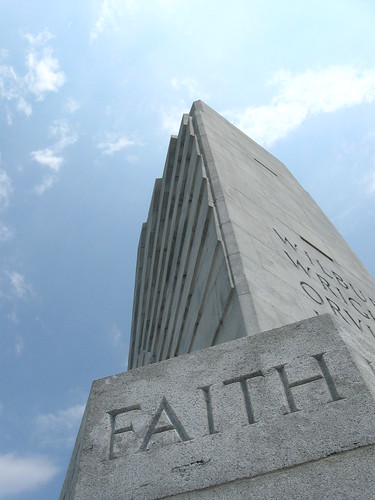
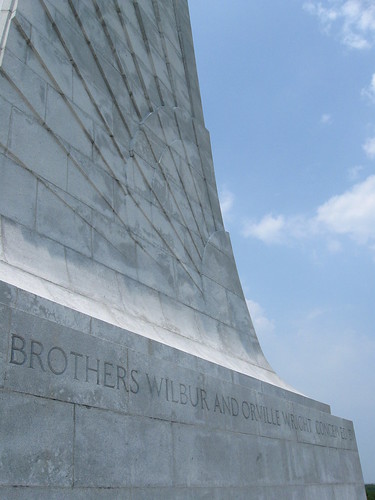


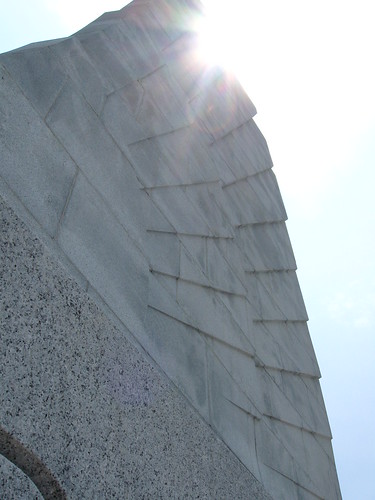


They Taught the World to Fly!
Wind, sand, and a dream of flight brought Wilbur and Orville Wright to Kitty Hawk, North Carolina where, after four years of scientific experimentation, they achieved the first successful airplane flights on December 17, 1903.
With courage and perseverance, these self-taught engineers relied on teamwork and application of the scientific process. What they achieved changed our world forever.
The tower was designed by Rodgers and Poor, a New York City architectural firm; the design was officially selected on February 14, 1930. Prior to the memorial's construction, the War Department selected Captain William H. Kindervater of the Quartermaster Corps to prepare the site for construction and to manage the area landscaping. To secure the sandy foundation, Captain Kindervater selected bermuda grass to be planted on Kill Devil Hill and the surrounding area. He also ordered a special fertilizer to be spread throughout the area to promote grass and shrubbery growth and decided to build a fence to prevent animal grazing. With a strong foundation in place, the Office of the Quartermaster selected Marine Captain John A. Gilman to preside over the construction project. Construction began in October 1931 and with a budget of $213,000, the memorial was completed in November 1932. In the end, 1,200 tons of granite, more than 2,000 tons of gravel, more than 800 tons of sand and almost 400 tons of cement were used to build the structure, along with numerous other materials. It is constructed of granite mined at the North Carolina Granite Corporation Quarry Complex. National Park service.

Wright Brothers' Kitty Hawk Camp
The Simple Quarters of the Pioneers of Flight
Photos by Bob Kirchman
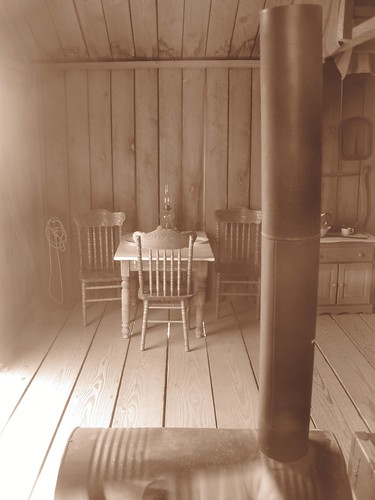
This is the reconstructed camp of the brothers as it might have looked in December of 1903.


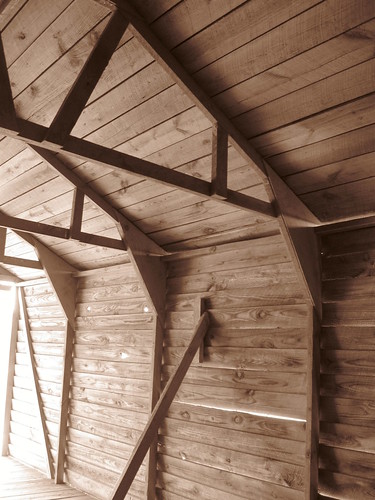


Sunset Over the Sound, Duck, NC
Photo by Karley Spralin

Sunrise Over the Atlantic Ocean
Photo by Karley Spralin
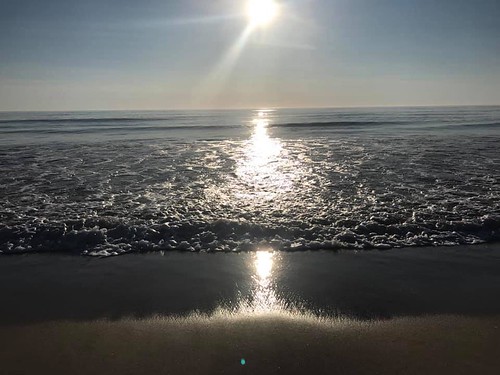
Atlantic Ocean, Wrightsville Beach
Photo by Bob Kirchman
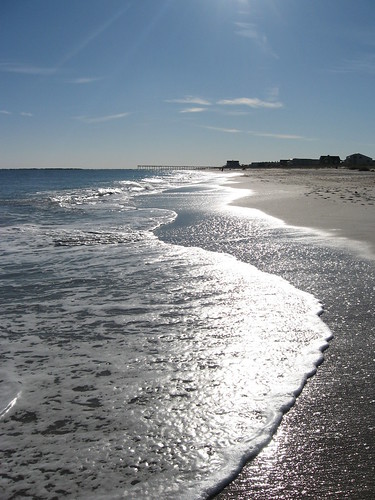
Ionic Columns, Wilmington, NC
Photos by Bob Kirchman
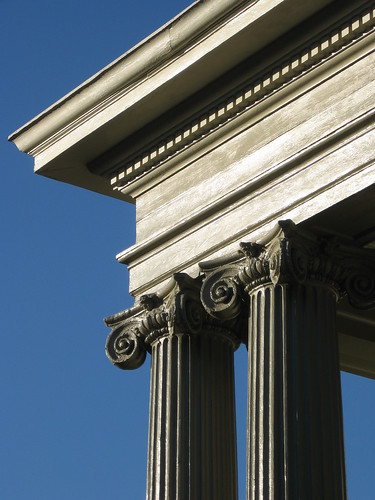
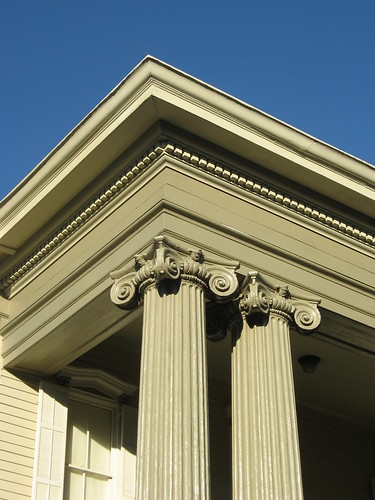

Ends of the Road
Eastern and Western Terminus of I 40

Photo by John Stradle.

When the Interstate Highway System was originally constructed, Interstate 40 was only planned to go from Barstow, California to Greensboro, North Carolina but in the late 1970s it was extended to Raleigh, the state capital. In the following years it would be extended to the port city of Wilmington, North Carolina. Interstate 40 is 2554 miles long between Barstow and Wilmington but the cities are only 2480 miles apart if you travel by US 74 to I 95 and I 20 to I40.
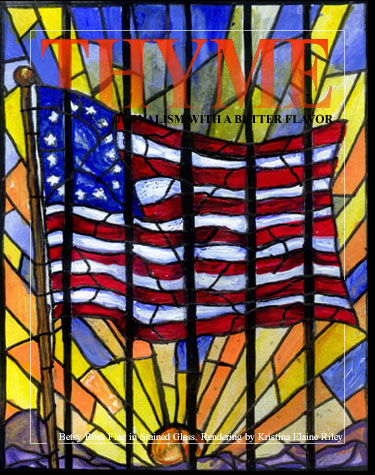
Betsy Ross Flag in Stained Glass. Rendering by Kristina Elaine Greer.
Reverend Richard's Prayer
From Homer Hickam's Book: 'Sky of Stone'
I was reading Homer Hickam's book: Sky of Stone when this passage riveted me with its profound wisdom, succinctly stated. Hickam describes a 4th of July celebration in Coalwood where the Reverend gave this invocation: [1.]
Dear Lord, we are gathered here to celebrate not just the independence of our great land, but also the document on which it stands. There is much to admire in that document but what we best remember is this: We hold these truths to be self-evident; that all men are created equal; that they are endowed by their Creator with certain inalienable rights; that among these are life, liberty, and the pursuit of happiness.
To prepare for this invocation today, I have pondered long and hard these words. Most of you know that I rarely go anywhere without my Bible. It is an old Bible. It belonged to my grandfather. What you don't know is that inside this book, I have always kept a copy of the Declaration of Independence. It also belonged to my grandfather. He believed it to be as Holy as his Bible.
When I was a boy, somebody once asked me if my grandfather had been a slave. I couldn't imagine that could be true so I went to him and asked him: Grandfather, were you a slave? He said, Child, a man called me that but I was never a slave and you know why? Because I could read. My mama, she taught me when that man wasn't looking, just as her mama taught her.
When he became officially a free man, my grandfather purchased this Bible and a copy of the Declaration of Independence. He kept them both until the day he died. He left them to me.
I have come to understand my grandfather was right. No man or woman can be a slave if they can read. Especially if they can read the Bible and the American Declaration of Independence.
But that means there are still slaves in this land. There are slaves who do not know that they have inalienable rights given to them by God, and that they also have, by the grace of the Lord, life, liberty, and the right to pursue their happiness and the happiness of their families.
They are slaves to their own ignorance. Ignorance is the ultimate slave owner.
So on this 4th of July, I pray a special prayer.I pray for the day when the tyranny of ignorance will be banished all across this great land and every man, woman, and child can read and understand what they read.
I pray for that day.I pray every day for that day."
The good Reverend had planted in me a renewed vision of the mission before us. That is the mission of educating ourselves and our children.

The U.S. Capitol.
“If Thine Enemy Hunger; Feed Him”
Here is sound advice for our time:
Let love be without dissimulation. Abhor that which is evil; cleave to that which is good. Be kindly affectioned one to another with brotherly love; in honour preferring one another; Not slothful in business; fervent in spirit; serving the Lord; Rejoicing in hope; patient in tribulation; continuing instant in prayer; Distributing to the necessity of saints; given to hospitality. Bless them which persecute you: bless, and curse not. Rejoice with them that do rejoice, and weep with them that weep. Be of the same mind one toward another. Mind not high things, but condescend to men of low estate. Be not wise in your own conceits.
Recompense to no man evil for evil. Provide things honest in the sight of all men. If it be possible, as much as lieth in you, live peaceably with all men. Dearly beloved, avenge not yourselves, but rather give place unto wrath: for it is written, Vengeance is mine; I will repay, saith the Lord. Therefore if thine enemy hunger, feed him; if he thirst, give him drink: for in so doing thou shalt heap coals of fire on his head. Be not overcome of evil, but overcome evil with good.” – ROMANS 12:9-21

